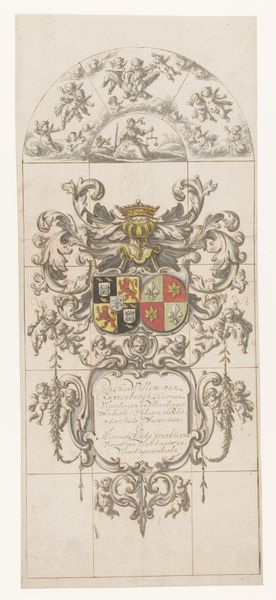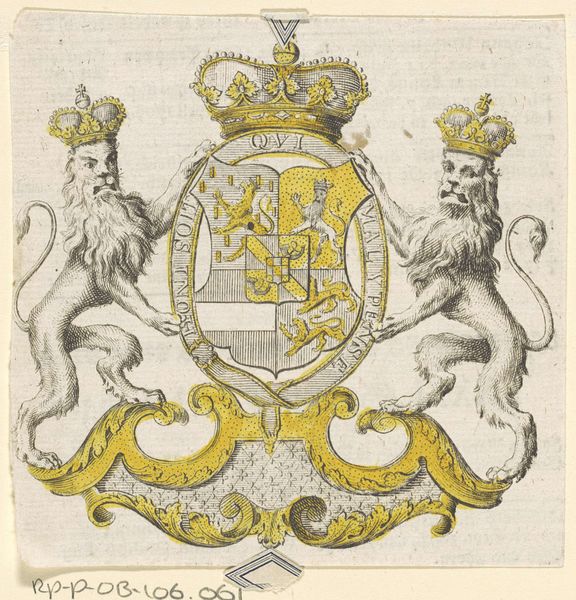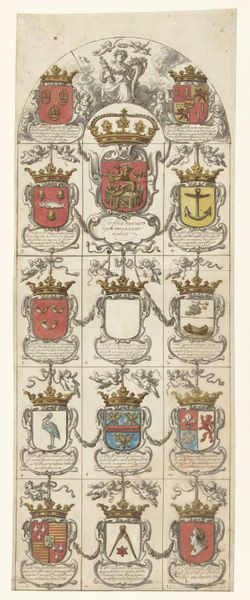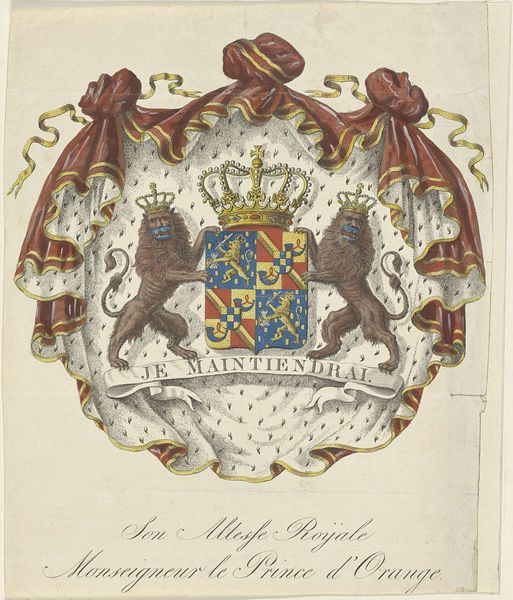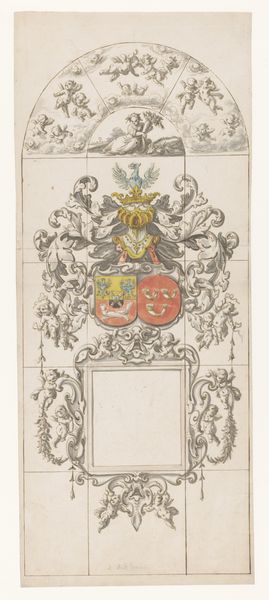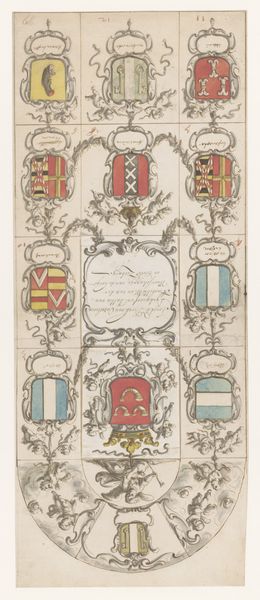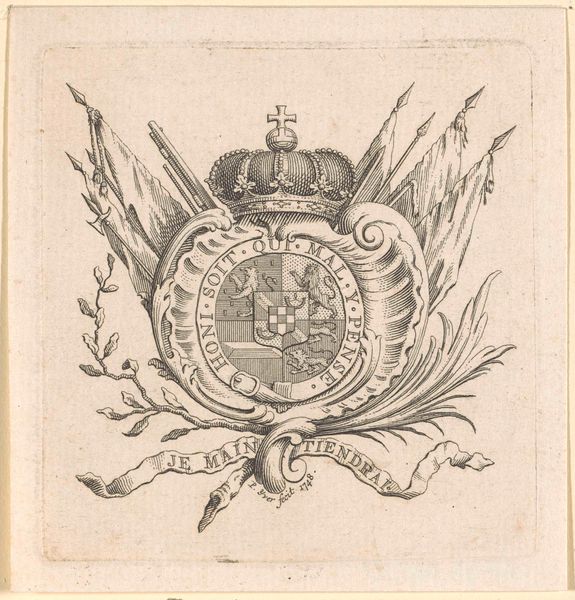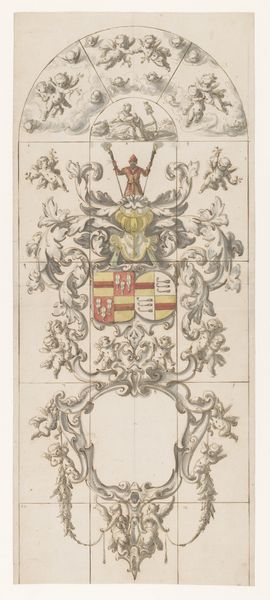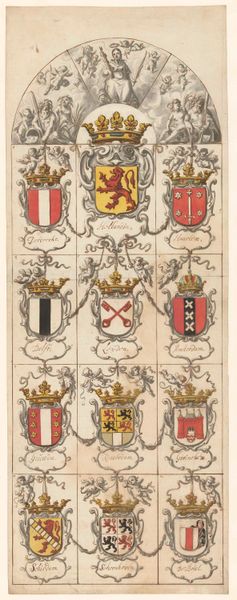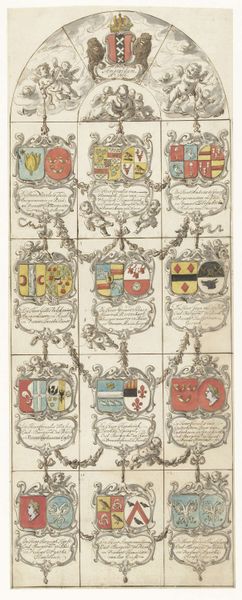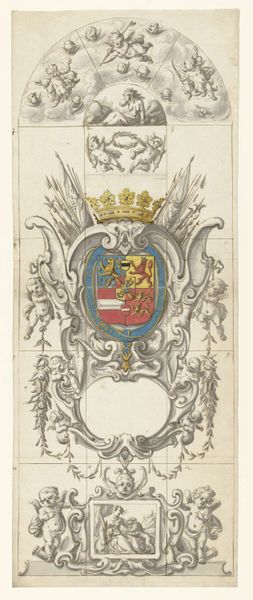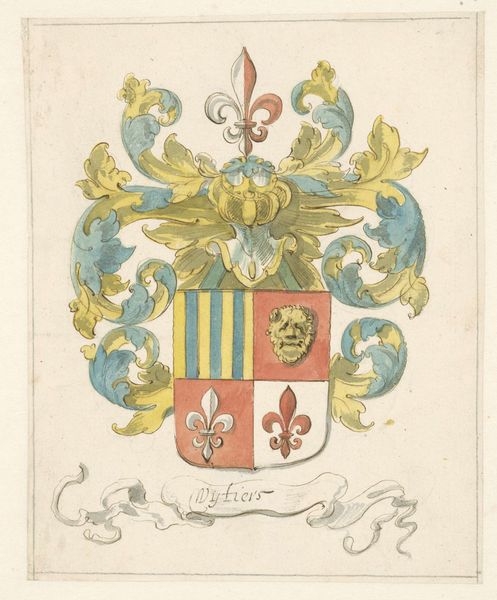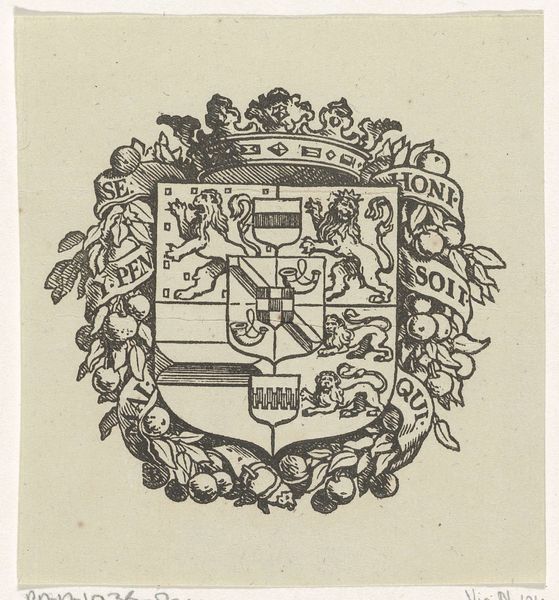
Ontwerp voor glasraam 13 geschonken door Reinier Pauw, dijkgraaf en baljuw van het hoogheemraadschap Amstelland 1665 - 1667
0:00
0:00
drawing, print, paper, ink
#
portrait
#
drawing
#
baroque
#
pen drawing
# print
#
paper
#
ink
#
pen-ink sketch
#
decorative-art
Dimensions: height 561 mm, width 225 mm
Copyright: Rijks Museum: Open Domain
Editor: This is "Ontwerp voor glasraam 13 geschonken door Reinier Pauw, dijkgraaf en baljuw van het hoogheemraadschap Amstelland" by Pieter Jansz., dating from around 1665-1667. It seems to be a pen and ink drawing on paper, a design for a stained-glass window, maybe? I find the composition incredibly detailed and intricate, particularly the coat of arms. What stands out to you in this piece? Curator: The very public nature of stained glass in the 17th century! This wasn't just art; it was a statement, a very visible declaration of power and patronage within a community. A work like this offered an important function in that society. Note how the design incorporates the patron’s coat of arms, reinforcing his status and lineage to everyone who sees the window. What does the inclusion of putti at the top suggest about how Reinier Pauw wished to be seen? Editor: I suppose they're supposed to indicate nobility and some connection to God. So, this stained glass wouldn’t be just decorative, it would act as a piece of propaganda, subtly shaping public perception of the person who donated it? Curator: Precisely. And the Baroque style itself—the ornate details, the dynamic composition—all contributes to that sense of grandeur and authority. Think about where this window might have been placed – likely a church or some other important municipal building. The location would influence how its message was received, amplifying Pauw's influence within the community. Is this making you see the drawing in a new light? Editor: Absolutely! It’s not just a pretty design, it's a carefully constructed image designed to communicate power. The cultural context completely changes my perception of the work. Curator: It goes to show how even seemingly decorative arts can be deeply intertwined with the social and political landscape of their time. Editor: I'll definitely consider the intended audience and political implications when looking at similar works going forward.
Comments
No comments
Be the first to comment and join the conversation on the ultimate creative platform.
